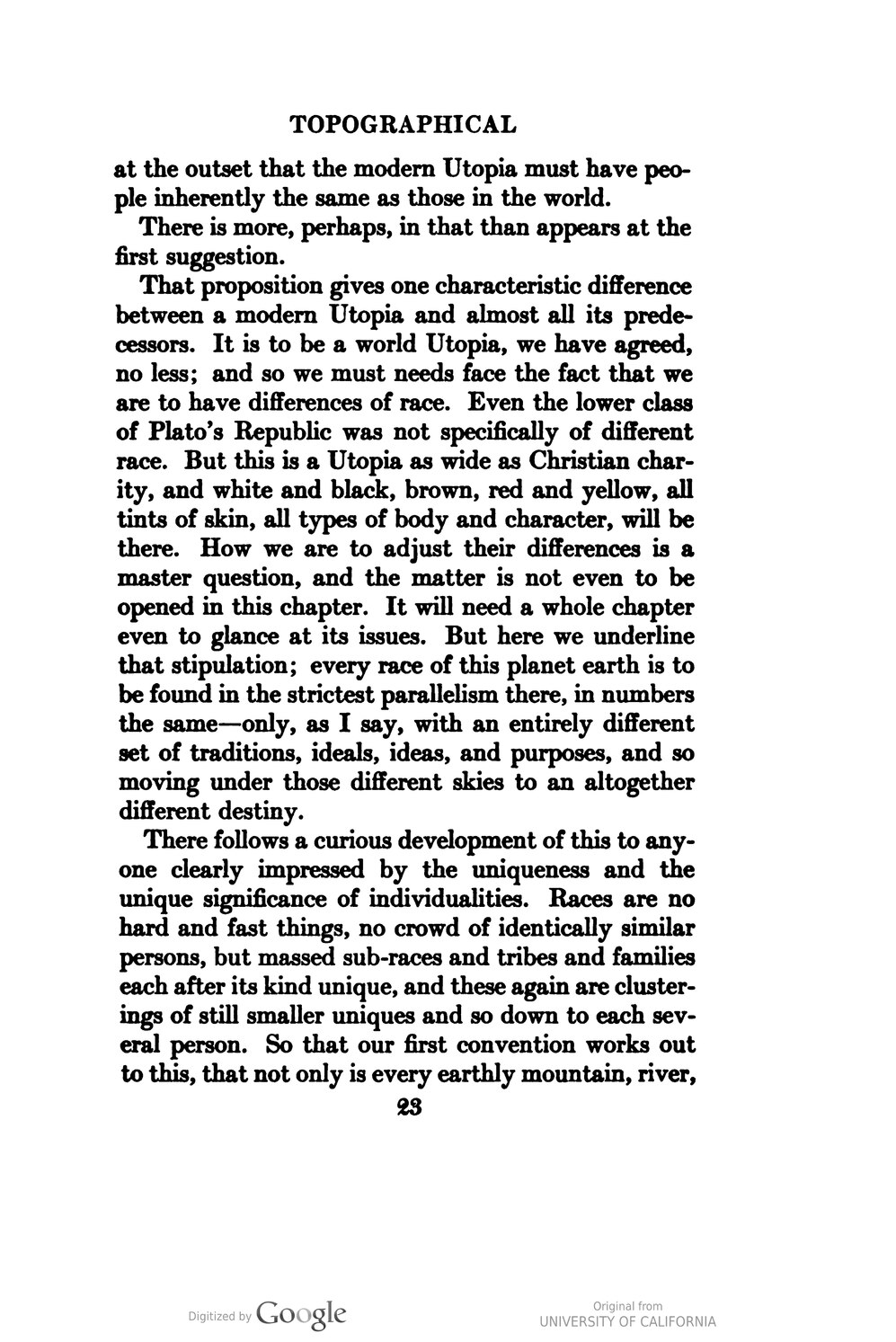TOPOGRAPHICAL
at the outset that the modern Utopia must have people inherently the same as those in the world.
There is more, perhaps, in that than appears at the first suggestion.
That proposition gives one characteristic difference between a modern Utopia and almost all its predecessors. It is to be a world Utopia, we have agreed, no less; and so we must needs face the fact that we are to have differences of race. Even the lower class of Plato's Republic was not specifically of different race. But this is a Utopia as wide as Christian charity, and white and black, brown, red and yellow, all tints of skin, all types of body and character, will be there. How we are to adjust their differences is a master question, and the matter is not even to be opened in this chapter. It will need a whole chapter even to glance at its issues. But here we underline that stipulation; every race of this planet earth is to be found in the strictest parallelism there, in numbers the same—only, as I say, with an entirely different set of traditions, ideals, ideas, and purposes, and so moving under those different skies to an altogether different destiny.
There follows a curious development of this to anyone clearly impressed by the uniqueness and the unique significance of individualities. Races are no hard and fast things, no crowd of identically similar persons, but massed sub-races and tribes and families each after its kind unique, and these again are clusterings of still smaller uniques and so down to each several person. So that our first convention works out to this, that not only is every earthly mountain, river,
23
